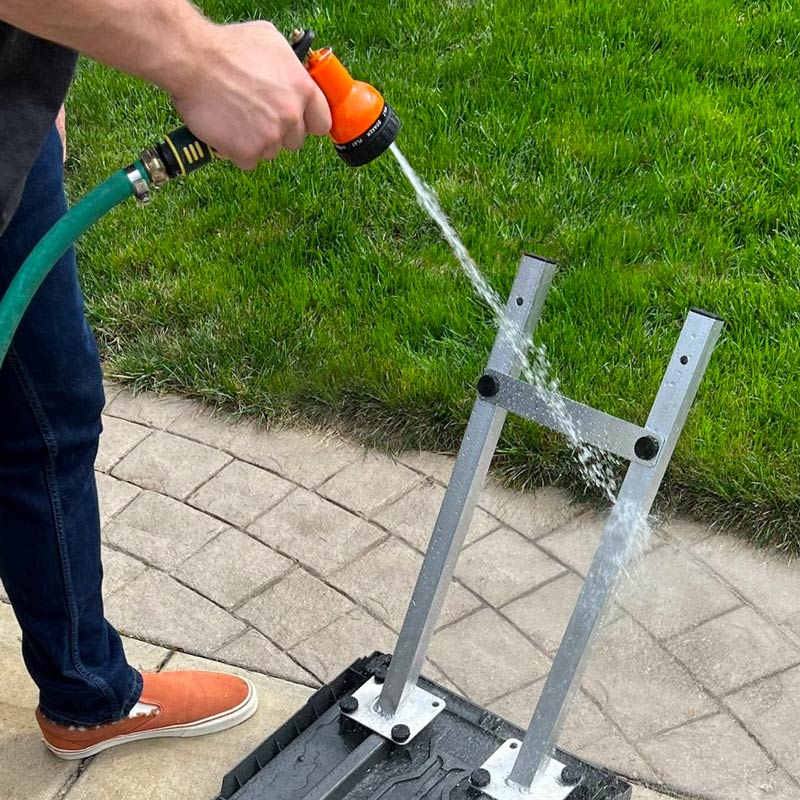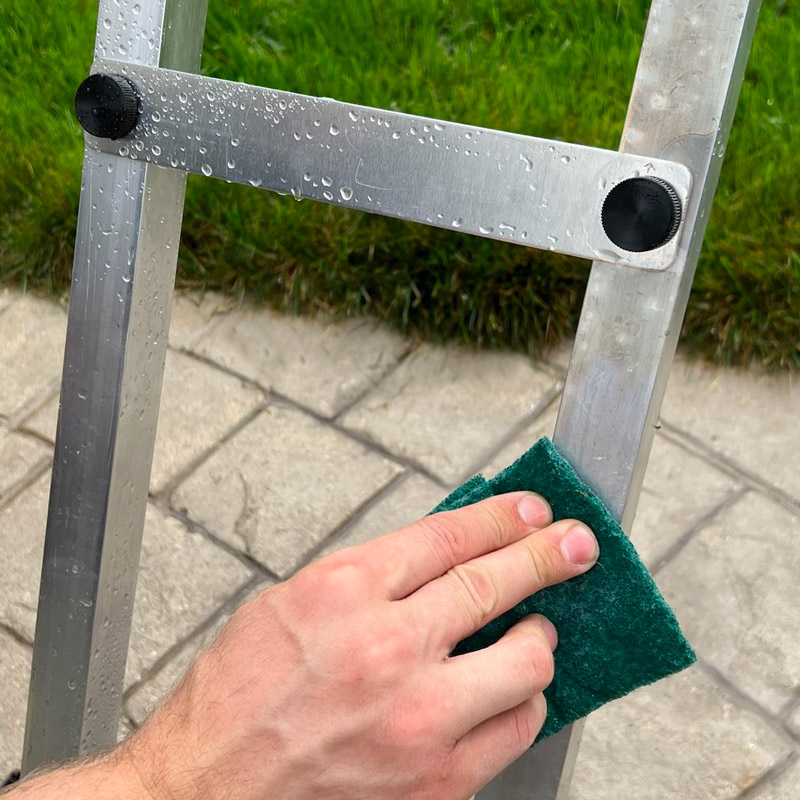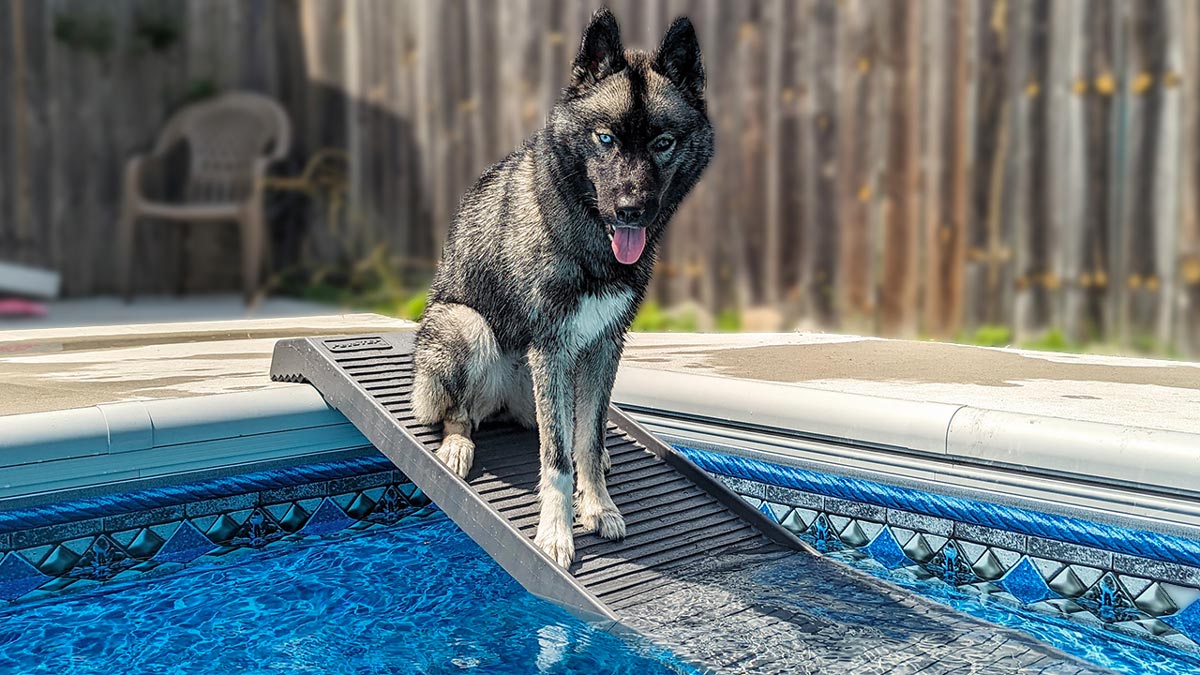As the temperature outside creeps up, we start running toward our pools. Especially after our pups have been playing out in the heat, they want a place to cool off and have fun. That’s why PetStep developed the Pool Leg Kit that attaches to the underside of the PetStep ramp. It makes it super easy for your dog to safely get in and out of the pool so they can enjoy the water with the rest of the family!
When using the PetStep ramp and pool legs in the pool, some clients have noticed that some white scale can appear on the aluminum pool legs. This is why we recommend that the ramp and pool legs be removed from the pool after each swimming session so that they don’t sit in the pool for days at a time. Because chlorine and saltwater pools can have minor reactions with the aluminum legs, we have a few tips for preventing and cleaning any buildup that appears on your PetStep pool legs.
Why Aluminum?
When designing and constructing the pool legs for the PetStep ramp, we chose aluminum for a couple of reasons. First, aluminum is a very durable material that can withstand a lot of force as well as being exposed to the elements. The aluminum legs create a stable, secure base for the ramp in the pool so that your dog can safely get in and out. Second, aluminum is a lightweight metal, making the pool legs easy to move and install onto the PetStep ramp.
Aluminum and Chlorine
Although an ideal choice for its durability, aluminum can be a slightly reactive metal. Unlike other metals, it will not rust when submerged in water. When exposed to chlorine and salt, however, aluminum can begin to oxidize. Oxidation is a reaction where electrons from one substance are lost to another. When oxidation occurs in a chlorinated pool, it appears as a white buildup on the surface of the aluminum.
Aluminum and Saltwater
Saltwater pools function similarly to chlorine pools, as the dissolved salt in the water generates chlorine that sanitizes the pool water. Because of this, aluminum will also oxidize in saltwater pools, usually to the same extent as in pools treated with chlorine. Thus, the white buildup on the aluminum pool legs also occurs in saltwater pools.
PetStep Pool Leg Care
So, what should you do about the oxidation? While it doesn’t interfere with the durability of the legs, the white oxidation buildup also does not look attractive. The chlorine or salt water can also affect the soft rubber treads on the ramp, causing them to become slightly discolored. There are a few things you can do to both reduce and remove the oxidation buildup to keep your PetStep pool legs and ramp looking brand new for the seasons to come.
1. Remove the Ramp and Legs from the Pool After Use
The more your ramp and pool legs sit in the pool, the higher the chance that the legs will begin to oxidize. Taking the pool ramp out of your pool after each use can significantly decrease the chances of oxidation. Removing the ramp from your pool after each use will also help prevent any slight discoloration on the surface of your ramp.
2. Hose Down the Ramp and Legs With Water
After removing the ramp and legs from the pool water, taking the extra step to rinse off the ramp and legs with a hose can further prevent oxidation and discoloration. The hose water will help wash away any chlorine or salt that is sticking to the ramp and legs.
If you do not have access to an outdoor hose, you can fill up a bucket with tap water and rinse off the ramp that way. A wet wash cloth can also be used to wipe down the ramp after use to prevent oxidation.

3. Use a Scour Pad to Remove Buildup

If oxidation buildup does start to collect on your pool legs, it can be easily removed with a scouring pad you probably already have laying around your house for getting tough grease off of dishes. You can use the scour pad dry or with a little tap water to remove the buildup. Since the buildup only occurs on the outside of the aluminum, it should be easy to lightly scrub it away. Once the ramp goes back into the pool, be sure to remove it and hose it down regularly to prevent further oxidation.
Our Goal is to Make Swimming in the Pool Safe for Your Dog
At the end of the day, your dog’s safety will always be PetStep’s #1 priority. Our pool legs were constructed to be a durable, stable base so your dog will feel secure on the ramp. While the oxidation that may occur on the pool legs isn’t the prettiest to look at, it won’t interfere with the leg’s functionality or longevity. By taking a few simple preventive measures, you can ensure that your PetStep ramp and aluminum pool legs will continue looking new for years to come!




